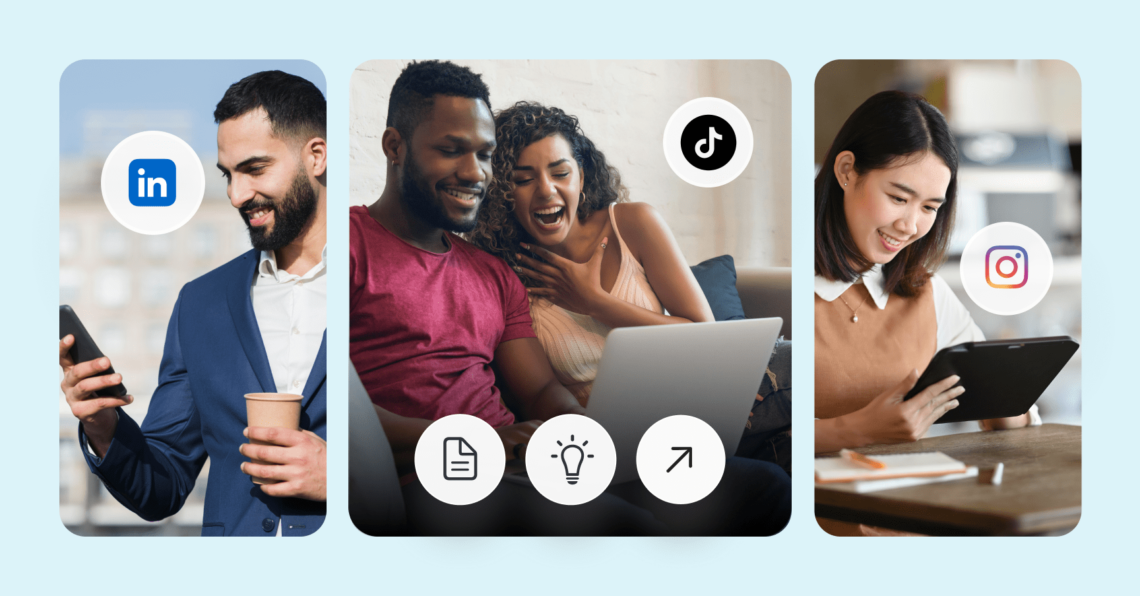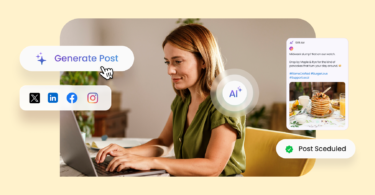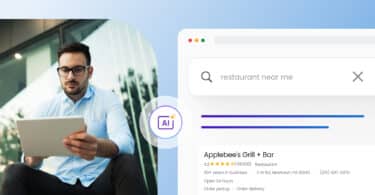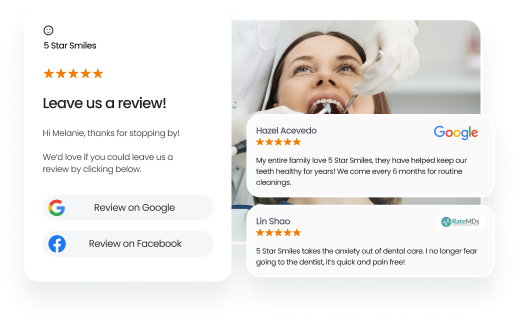Social media success starts with understanding why users scroll, and how social media platform personas define their mindset on each app.
Summary
This blog explains why traditional social media planning no longer works and how brands can adapt to the unique mindsets that drive behavior on each platform. It explores why demographics alone fail to explain user actions, outlines the four key motivations that influence engagement and unfollows, and introduces seven platform personas that reveal how tone, format, and timing shape results. These insights come from the Birdeye State of Social 2026 Report, which draws on data from 1,300 U.S. consumers and 300 multi-location brands. The goal is clear: help your brand make every scroll count by aligning content with the intent behind every tap, swipe, and view.
Curious how to shift from demographics to personas and make your content part of the scroll instead of an interruption? Let’s dive in.
Table of contents
- Summary
- Why should brands move from demographics to platform personas
- What motivates people to use social media, and why do they unfollow brands
- Meet the seven social media platform personas shaping engagement
- When is the best time to post on social media for maximum engagement?
- Which content formats and tones perform best on social media
- How should brands use AI in social media marketing without losing authenticity
- How often should brands post on social media to stay visible
- Final thoughts: Make every scroll count
Why should brands move from demographics to platform personas
Traditional segmentation, such as age, gender, and zip code, can’t explain social behavior anymore. That’s the gap. On social, motivation matters more than metadata.
In our research, four simple questions revealed more about user intent than any demographic field:
- Why does someone open that app?
- When do they scroll?
- How long do they stay?
- What content do they expect to see next?
These answers unlock a clearer model for content planning. For example, TikTok captures nearly half of Gen Z’s attention span, yet only one in five brands has a meaningful presence on the platform.
Early movers win attention at a discount—not because they post more content, but because they meet users where their attention already resides.
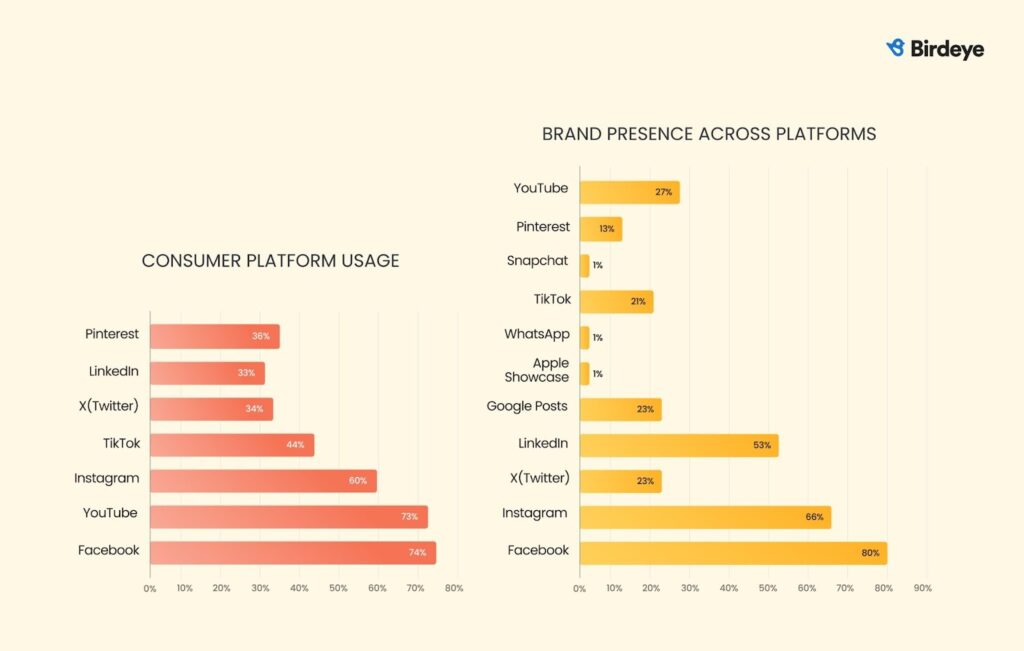
Strategic takeaway: If your brand is still over-indexed on platforms with low engagement and under-invested in areas where your audience is most active, you’re not just missing reach; you’re leaving ROI on the table.
What motivates people to use social media, and why do they unfollow brands
Every social session starts with a purpose. Whether users admit it or not, they’re looking to be:
- Entertained
- Connected
- Informed
- Inspired
| Motivation | What to publish |
|---|---|
| Entertainment | Fast cuts, humor, trend-driven posts |
| Connection | Polls, UGC spotlights, tagged community photos |
| News/learning | Data hooks, “Did you know?” stat frames |
| Inspiration | Aspirational stories, how-to guides, before-and-after transformations |
These four motivations drive most login behavior, and each aligns with a specific content approach.
When brands understand “why” people open an app, they can publish content that fits that mindset and keeps audiences coming back
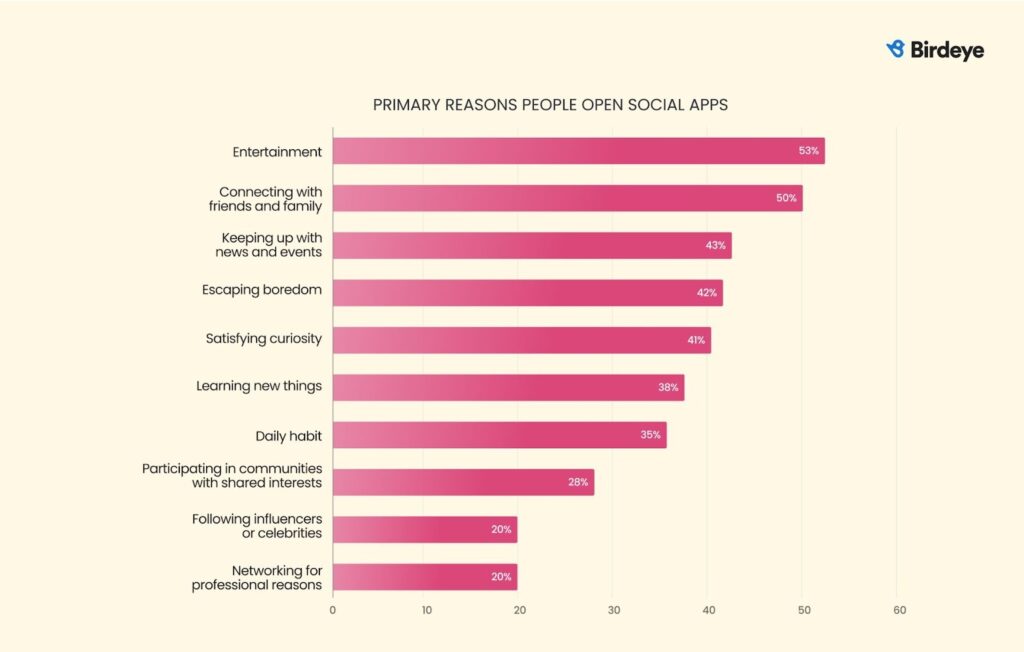
This intent-led planning becomes even more important when you realize why users disengage. The top reasons people unfollow a brand are:
- Irrelevant content
- Ad overload
- Misinformation or tone-deaf messaging
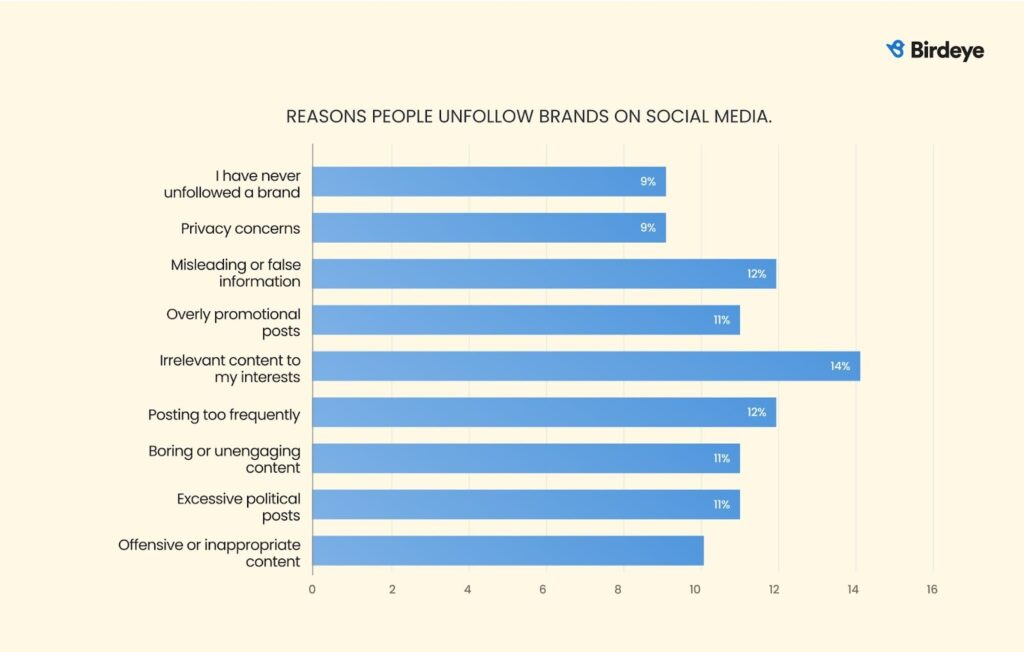
In other words, audiences leave when it feels like you’re talking “at” them instead of “to” them.
Strategic takeaway: Skip the generic sales talk. Match every post to user motivation. The more your posts feel like a natural fit for the user’s mindset on that platform, the more likely they are to engage and stay.
Meet the seven social media platform personas shaping engagement
Think of each platform not just as a channel, but as a mindset. The person scrolling through LinkedIn during a morning commute isn’t in the same headspace as the one scrolling Instagram reels at midnight.
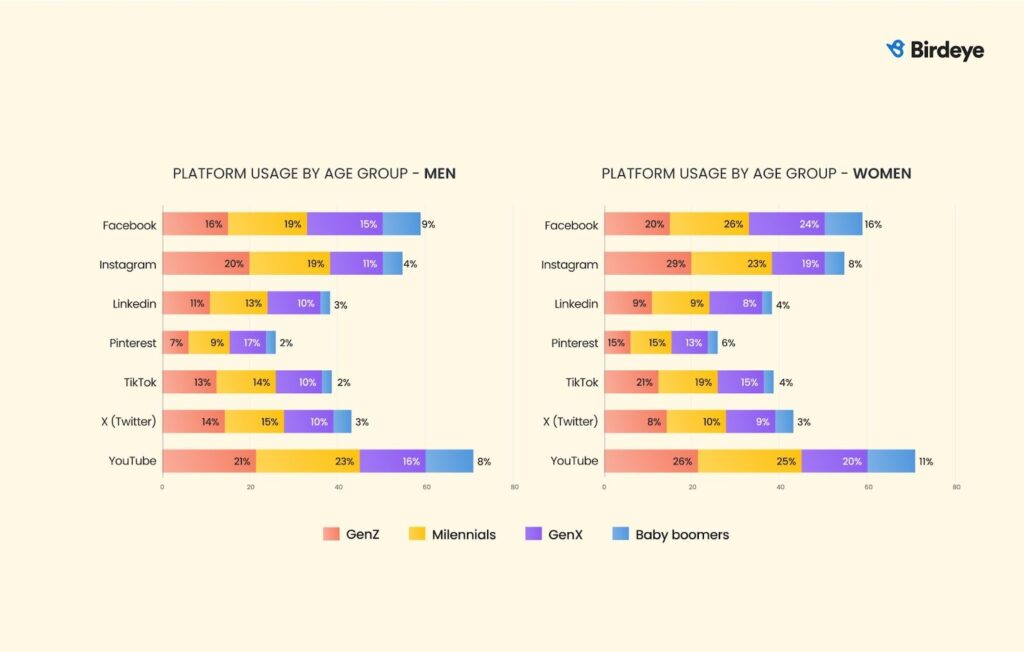
To help brands align their content with these scrolling mindsets, we’ve identified seven platform personas. Each one reflects not just where your audience is, but why they’re there and what tone and format will resonate. Use these as creative briefs, not rigid rules.
| Persona & Platform | Typical session | Winning tone | Sample post idea |
|---|---|---|---|
| Community Connector – Facebook | Evening group check-ins | Neighborly, helpful | Poll on weekend plans; photo album from local event |
| Visual Voyager – Instagram | Mid-day micro-escapism | Upbeat, aesthetic | 15-sec makeover Reel; “how we built the look” carousel |
| Discovery Scroller – TikTok | Late-night binge | Fast, playful, trend-savvy | 9-sec unboxing hack; duet challenge |
| Self-Paced Learner – YouTube | Search-led deep dive | Expert, structured | Step-by-step repair video with chapters |
| Career Seeker – LinkedIn | Morning insight scan | Data-driven, practical | 5-chart industry slide deck; founder Q&A clip |
| Idea Collector – Pinterest | Weekend project planning | Calm, instructive | Pin a series of remodel stages; downloadable checklist |
| Real-Time Reader – X/Twitter | Live news bursts | Concise, opinionated | Thread of conference highlights: stat + POV graphic |
Strategic takeaway: Don’t just “be present” on a platform, show up in the right voice, with the right content, at the right time. When content fits the mindset of the user, you’re not interrupting the scroll; you’re becoming part of it.
When is the best time to post on social media for maximum engagement?
Not all audiences are online at the same time—or for the same reasons.
Gen Z spends an average of 3.4 hours a day on social platforms. Boomers? About 45 minutes. That gap isn’t just about quantity; it’s about cadence, expectations, and timing.
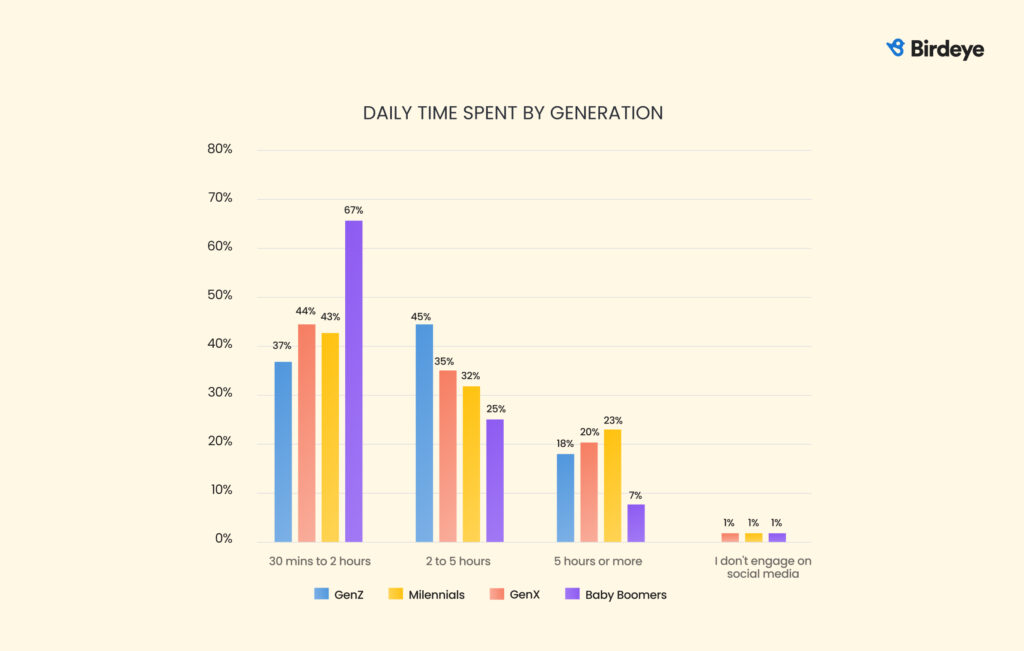
To break through, your content needs to match when and how each platform’s audience is active. Here’s where timing aligns with intent:
- TikTok & Instagram Reels → Two to three posts daily
(High turnover, binge-scrollers, algorithm favors freshness) - YouTube Shorts + Long-Form → One tutorial weekly + three Shorts
(Users search with purpose; evergreen how-tos win) - LinkedIn → Morning scrolls, ideally Mon/Wed/Fri
(Decision-makers check during workday startup windows)
Match that with platform-specific dwell patterns to find the cadence sweet-spot:
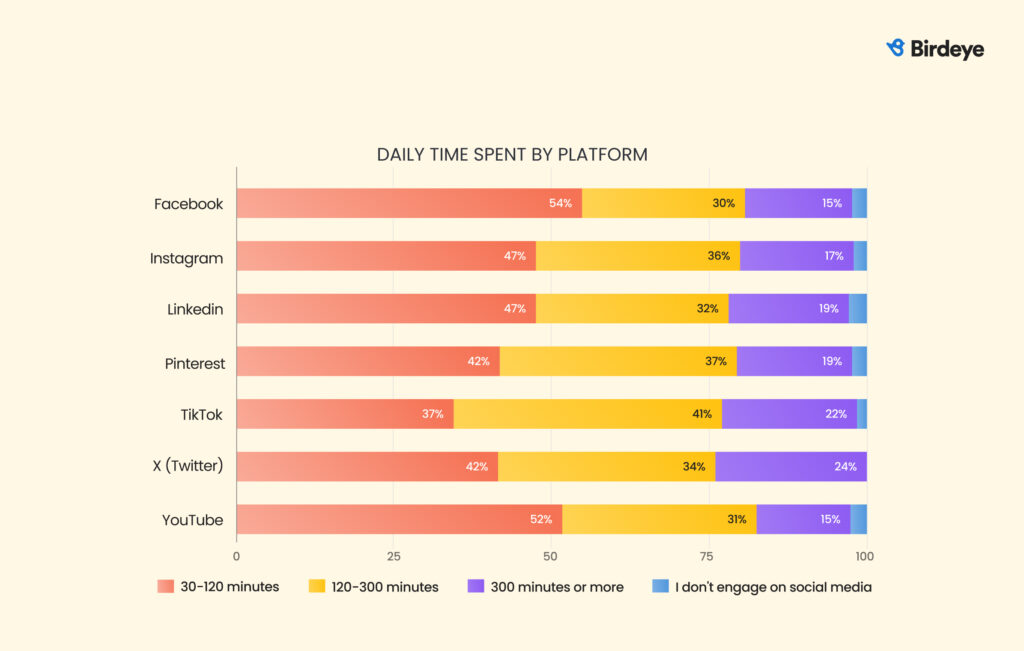
Strategic takeaway: Don’t chase volume – schedule content around your audience’s natural scroll rhythms. Align your publishing calendar with platform-specific “persona windows” to earn more engagement per post—and make every minute of your team’s effort count.
Which content formats and tones perform best on social media
Preferred content formats confirm what most marketers already suspect — video dominates. But nuance matters across platforms:
- Vertical video rules TikTok, Reels, and Shorts.
- Carousel posts still drive the most saves on Instagram.
- Document posts outperform text on LinkedIn.
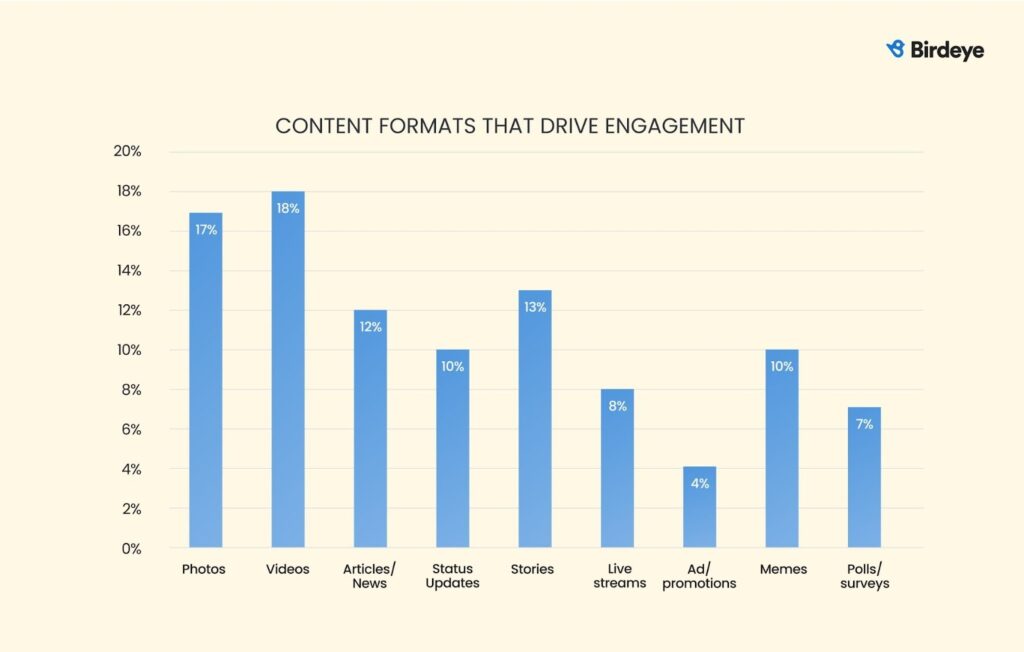
For every platform, remember to add captions, as 85% of mobile video views happen with the sound off.
How should brands use AI in social media marketing without losing authenticity
AI is changing how brands create and communicate, but audiences still expect a human voice.
Our research shows that while platforms like LinkedIn and TikTok are open to AI-generated content, Facebook users are more skeptical.
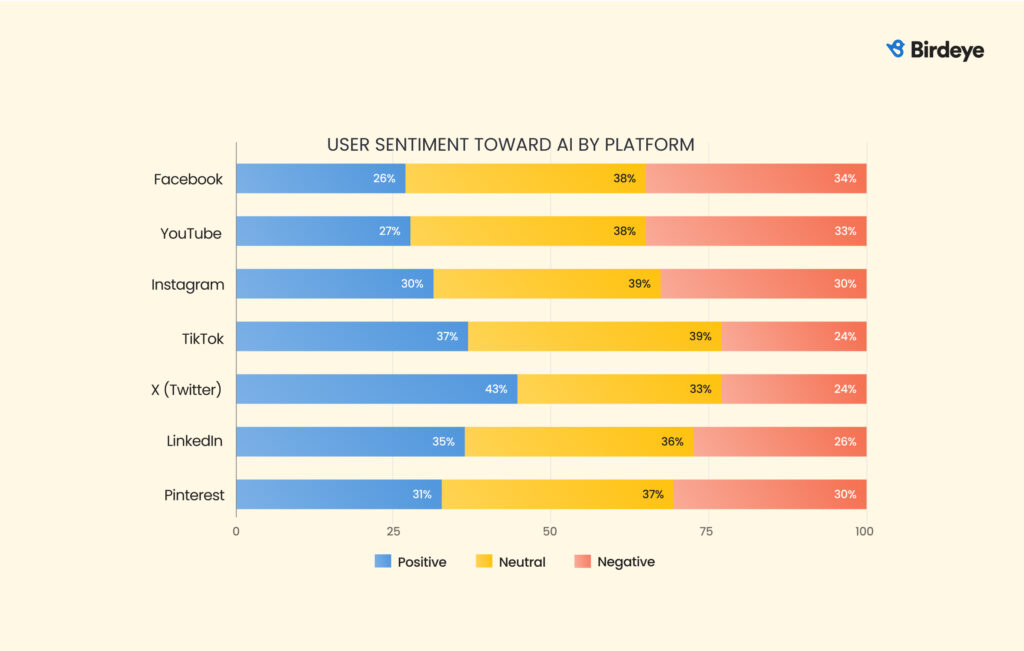
And across the board, people draw the line at robotic replies and generic posts. AI should support your creativity, not replace it. The sweet spot is when AI helps you post faster, personalize smarter, and still sound unmistakably human.
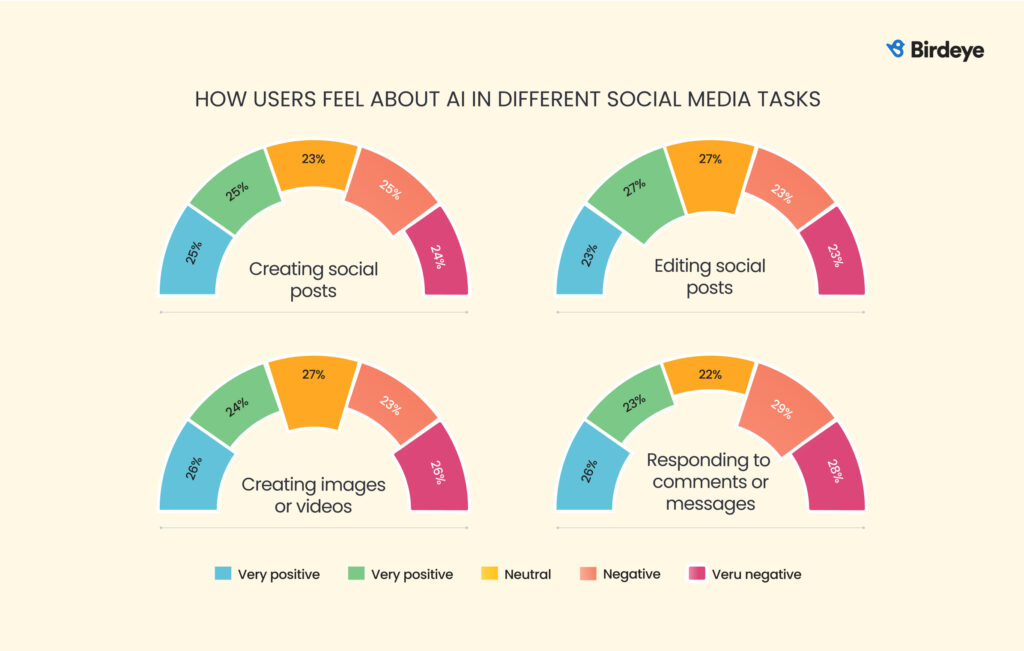
That’s why the overall sentiment toward AI-generated content is mixed. Many users are neutral or cautiously open.
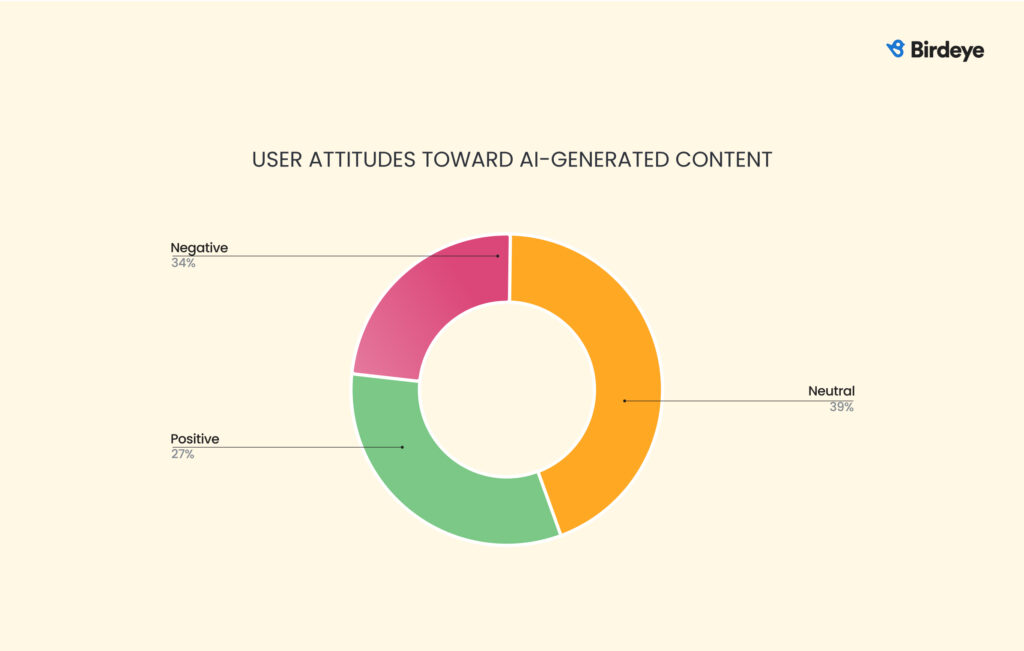
AI should support your creativity, not replace it. The sweet spot is when AI helps you post faster, personalize smarter, and still sound unmistakably human.
Here’s how to keep your brand voice consistent, credible, and trusted, without burning out your team:
- Draft, then personalize: Use AI to brainstorm outlines or write initial captions. But always layer in your brand tone before publishing.
- Label visuals clearly: If you’re using AI-generated images, disclose it transparently to maintain trust.
- Human-first replies: Especially on community-driven platforms like Facebook and TikTok, review every AI-drafted reply through a human lens.
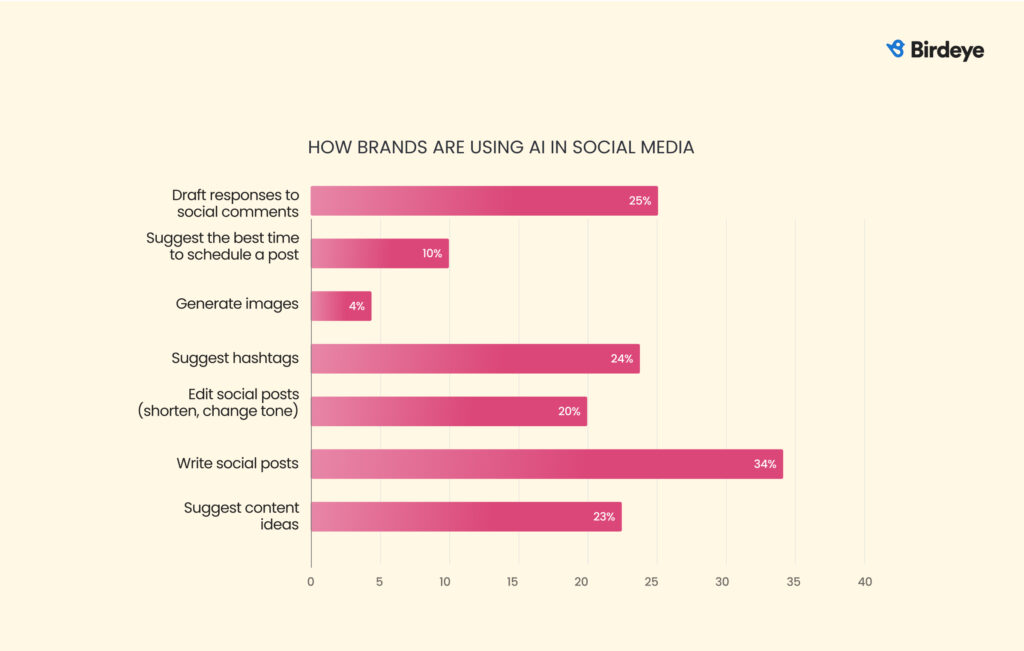
That’s exactly how Birdeye Social AI works. It helps you create faster, reply smarter, and stay on-brand without compromising consistency:
- Platform-specific captions tailored to each channel
- Smart reply drafts routed through a unified inbox
- Auto-adapt content across formats, with guardrails to protect your voice
And the payoff is clear: businesses that lean on AI for support are seeing improvements in quality, time savings, and reach.
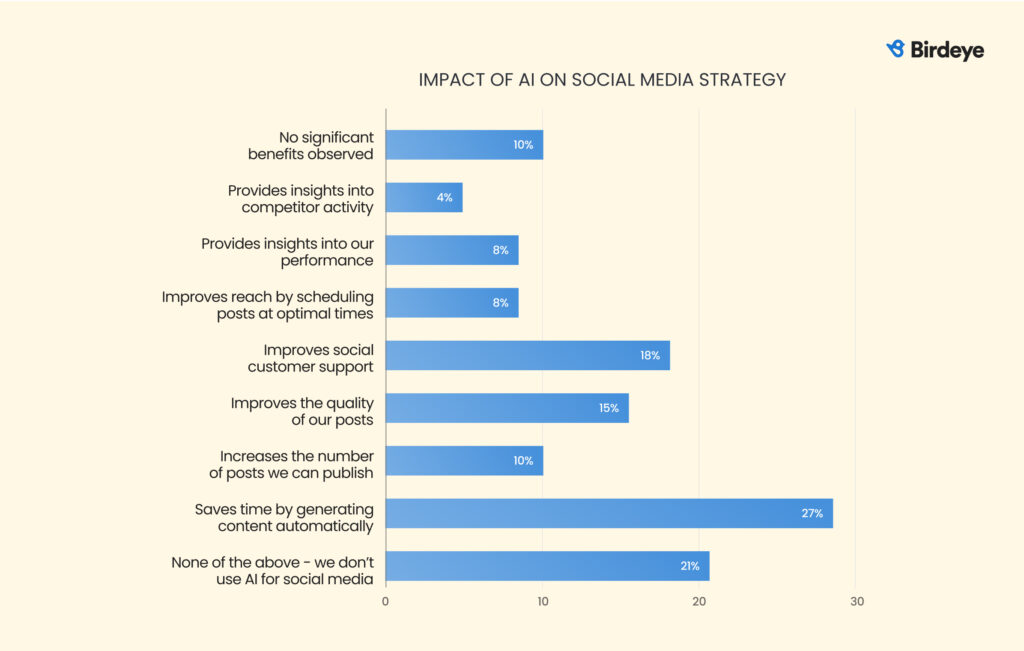
Strategic takeaway: AI should amplify your brand’s personality. With Birdeye Social AI, you get speed and authenticity at scale.
How often should brands post on social media to stay visible
Many brands still treat social like a digital bulletin board, posting once or twice a week and hoping for reach. But that model no longer works.
Today’s platforms reward recency, relevance, and rhythm. The brands that post daily, or multiple times a day, occupy more real estate in the feed. Over time, that visibility snowballs into an algorithmic advantage.
Meanwhile, brands that post sporadically see their reach erode, their engagement drop, and social media start to feel ineffective. It’s not that the content is bad; it’s that the inconsistency makes it invisible.
Here’s the fix:
- Plan one core piece of content each workday
- Slice it into multiple formats: short clips, Stories, carousels
- Let AI handle captions, hashtags, and timing.
- Keep your team focused on creativity and interaction
Think of cadence as a strategic asset similar to media spend. Maintaining consistency in cadence boosts your “share of scroll’ across various platforms.
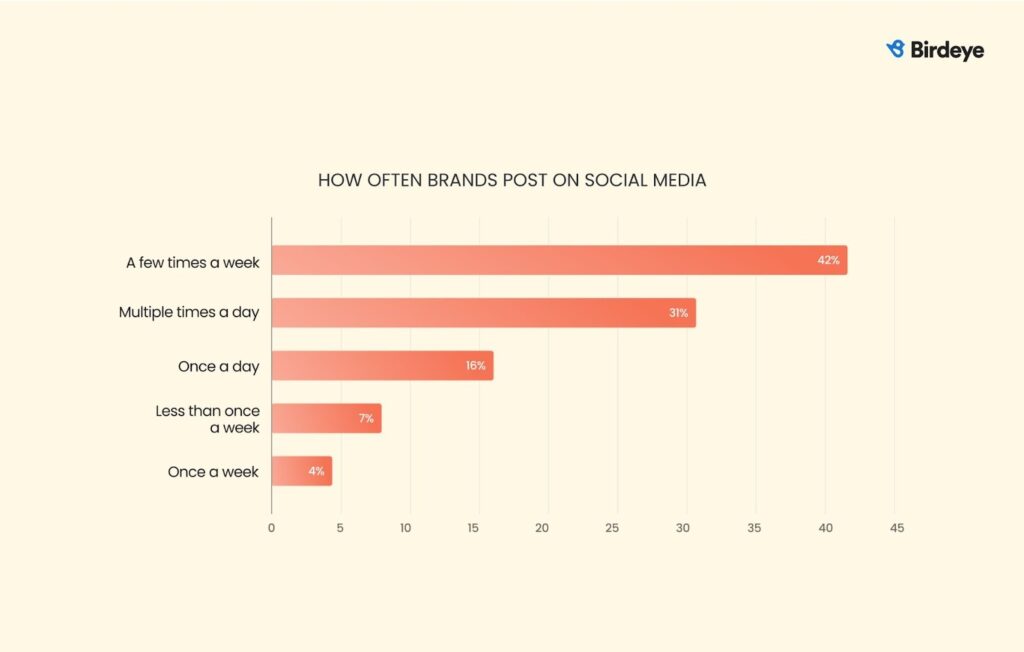
Our data shows this clearly:
Brands that post several times daily outperform those stuck in the middle tier (a few posts a week). And the danger zone? A three-day gap. That’s often all it takes for the algorithm to deprioritize your next post.
Strategic takeaway: Don’t chase random volume. Commit to disciplined, daily posting, then use AI tools to stretch each asset across platforms without stretching your team.
FAQs
Demographics like age and location do not explain why people use a platform or what content they want to see. Platform personas highlight user intent, such as browsing LinkedIn for insights versus scrolling TikTok for entertainment, and help brands match their tone, timing, and content to each mindset.
Most people follow brands that consistently entertain, inform, inspire, or connect with them. They unfollow when content feels irrelevant, overly promotional, or tone-deaf. Aligning posts with user motivation is the best way to keep audiences engaged.
The ideal posting time depends on the platform and audience mindset. For example, TikTok and Instagram thrive on multiple daily posts, YouTube performs best with consistent tutorials and Shorts, and LinkedIn sees higher engagement during weekday mornings. Matching your posting schedule to platform-specific scroll habits drives stronger engagement.
Video dominates across platforms, especially short-form vertical video on TikTok, Instagram Reels, and YouTube Shorts. Carousels work well on Instagram for saves and shares, while document-style posts perform better on LinkedIn. Adding captions to videos is essential since most users watch with the sound off.
AI should assist, not replace, human creativity. Use AI to draft captions, generate ideas, and automate repetitive tasks, but always personalize content in your brand voice. Disclose AI visuals clearly and review AI replies before publishing. This balance ensures efficiency without sacrificing authenticity.
Consistency is key. Brands that post daily, or multiple times a day, gain more visibility in feeds and algorithmic preference. Sporadic posting, especially with gaps longer than three days, can hurt reach and engagement. A disciplined, daily cadence supported by AI tools keeps content visible without overwhelming your team.
Final thoughts: Make every scroll count
Posting generic content is easy. However, if you want to achieve performance, genuine engagement, lower unfollow rates, and higher conversions, your content must align with the mindset of the person scrolling.
That means shifting from blanket posts to persona-matched publishing: the right tone, format, and timing for each platform, each user type, and each moment.
The challenge? Doing it consistently, every day, across dozens or even hundreds of locations.
That’s where Birdeye Social AI comes in:
- Create faster. AI suggests captions, hashtags, and visuals tuned to each platform’s vibe.
- Stay organized. Auto-tags posts by persona cues, so reporting shows exactly what resonates with each persona.
- Reply on time. One unified inbox routes all comments, DMs, and reviews, complete with AI-drafted responses to keep tone consistent and response times under an hour
- Prove value. Revenue, leads, and engagement roll up in one dashboard, no spreadsheet hassle.
With the right strategy and the right tools, you can make every scroll moment count. Ready to match content to every scroll mindset and prove the results? Watch our free demo to know how Birdeye can help you achieve that.

Originally published
